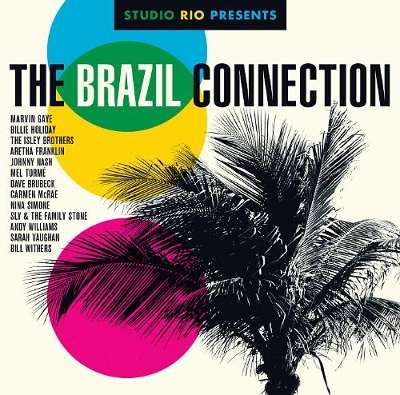Brazil’s heart and soul is music, which we celebrate with symphonic beats and expressive melodies. It is the life force of Brazil’s culture. These Afro-Brazilian rhythms can be found in the way people talk, walk and even play football. Music is the heart of every social gathering, from a family get-together to the carnival celebrations. We’ve always been huge fans of Brazilian music. We have a huge collection of bossa Nova and samba recordings between us, many of which we bought at flea markets in London, Paris, and Amsterdam. Ten rare albums of Marcos Valle, the legendary singer, composer, and producer, are among our most treasured finds. Jay-Z and Kanye West recently sampled them. Our favorite bootleg is a copy of the legendary 1962 Carnegie Hall concert in which Roberto Menescal–another great singer, composer and producer we have discovered–performed with Tom Jobim, Sergio Mendes and other bossa nova legends. Imagine all these pioneers in one concert. There is no stopping this music. This collection was inspired by this joyous and timeless music. We wanted to capture the Brazilian joie-de-vivre in iconic American performances such as Marvin Gaye’s, Billie Holiday’s, The Isley Brothers, and others. How would these songs sound if they were recorded in Rio de Janeiro with the best Brazilian musicians, arrangers and producers? After a year of planning, listening to records and sorting through many musician’s catalogs, the answer was finally found. We planned to use multi-track masters as well as a state-of the-art separation technology to extract vocal tracks. The original performance could be merged with authentically recorded backing tracks, arranged by a star cast of Brazilian musicians that we call Studio Rio. By March 2013 we were ready. We set off for Brazil in March 2013 and arrived in Rio at the height of the rainy season. The sound of raindrops reminded of Tom Jobim’s bossa Nova classic, “Aguas De Marco” (“Waters of March”). Inspiration was everywhere. Our apartment was right next to the house where “Girl From Ipanema” was written. Our office was located just blocks from the beach. This was the ideal environment for brainstorming, creating and sharing ideas. Everything seemed to happen by itself. We were introduced to Roberto Menescal and Marcos Valle through a series amazing coincidences in Rio. The adventure began when they both agreed to join us. To get to Menescal’s studio, we had to take a boat through a small rainforest outside of Rio. It was an amazing experience to meet one the founders bossa Nova on his home turf. Menescal, just receiving his Lifetime Achievement Grammy Award for music, fell in love Aretha’s version of “Walk On By” immediately and began to create a beautiful arrangement. Marcos Valle was a lovely host and he took us to his home to meet us. He immediately went to his piano to begin to perform Andy Williams’ “Music to Watch Girls By” with his unique, tasteful interpretation. Later, we learned that Marcos was a guest on Andy’s 1962 television show and had written two songs. Another amazing coincidence. Tom Jobim is the most important Brazilian composer, and one of our favourite artists. We were interested in finding some of the incredible musicians who recorded in his studio. We discovered that 50 years after Jobim created the music that truly defines bossa Nova, many of his sidemen are still active. Paulo Braga, part of Jobim’s famed rhythm section, was one of them. It was like magic. Everything just clicked. This was the inspiration for a reworking Billie Holidays’ “You’ve Changed” masterpiece. Braga suddenly stopped playing the first verse as we were recording it. He was so emotional that he couldn’t stop crying! He didn’t understand the meaning of the project because something had gone wrong in the translation. He realized that he was actually singing along to Billie’s original vocal track, and not just a singer who had been singing the song. He got together and performed beautifully the rest of the take. It was truly a touching moment. We needed to improve our Portuguese so we used a translator, but we stopped using it after a while. Musicians can communicate with each other without the use of words. Music is our language. They would be in the same room almost every session, set up in a circle and playing live. It is easy to feel the interaction and space between the players, many who have been friends for over forty years. After the first session, we returned to Rio several times to work on additional songs. In the end, there were over twenty tracks recorded, 12 of which are included in this collection. This was an incredible journey, combining the American classics with the vibrancy and energy of Brazilian music. Thanks to so many talented musicians, arrangers, and a dedicated production crew, it was an unforgettable experience. The music was a learning experience for us all. But the most important and most surprising lesson we learned was that Brazil is one of the most musical places we’ve ever visited in our lives. from http://www.studiorio.com
